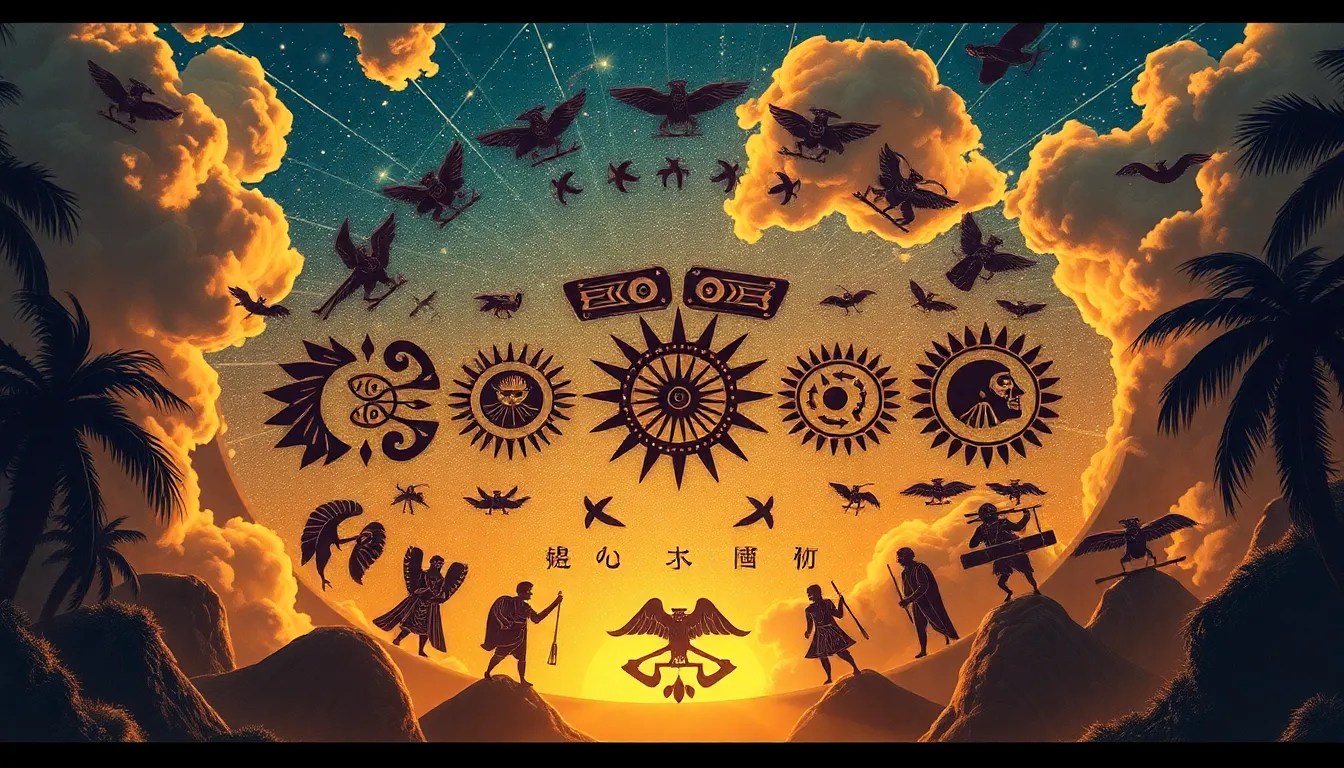The Sky’s Secret Language: Decoding Polynesian Celestial Symbols
I. Introduction to Polynesian Celestial Symbols
Polynesian mythology is a rich tapestry woven with stories, beliefs, and traditions that reflect the deep connection between the people and the cosmos. The night sky, dotted with stars and celestial bodies, has been a source of guidance and inspiration for generations. In this article, we will explore the significance of celestial symbols in Polynesian culture, particularly their role in navigation and mythology.
The importance of celestial navigation in Polynesian culture cannot be overstated. For the ancient Polynesians, the stars were not just distant lights; they were essential navigational tools that guided voyagers across vast ocean distances. Through an understanding of celestial symbols, Polynesians developed sophisticated techniques that allowed them to explore and settle some of the most remote islands in the world.
This article aims to decode these celestial symbols, revealing their meanings and the rich stories they tell about Polynesian identity and heritage.
II. Historical Context of Polynesian Astronomy
Astronomy played a pivotal role in ancient Polynesian societies, influencing their culture, navigation, and agricultural practices. Polynesians observed the movements of celestial bodies and used this knowledge to inform their daily lives and spiritual beliefs.
Key navigational techniques included:
- Stellar navigation: Using stars as reference points to determine direction.
- Wind and wave patterns: Understanding ocean currents and prevailing winds.
- Solar navigation: Utilizing the sun’s position during the day.
The significance of stars, planets, and celestial events in mythology is profound. Celestial phenomena were often linked to gods and creation stories, reflecting the interconnectedness of the physical and spiritual worlds.
III. Major Celestial Bodies and Their Symbolism
In Polynesian mythology, several celestial bodies hold particular significance:
A. The Southern Cross
The Southern Cross, or Crux, is a prominent constellation in the southern hemisphere, serving as a crucial navigational marker for Polynesian voyagers. Its shape is easily recognizable and has been associated with various myths, symbolizing guidance and direction.
B. The Pleiades
The Pleiades, known as Matariki in Māori culture, is another important constellation. It signals the start of the New Year in many Polynesian cultures and is linked to agricultural cycles, indicating when to plant and harvest.
C. The Moon
The phases of the Moon have a profound influence on cultural practices. For instance, specific lunar phases are considered more auspicious for fishing, planting, and other activities, reflecting a deep relationship with natural cycles.
IV. The Mythical Stories Behind the Stars
Prominent myths associated with celestial symbols illustrate the values and beliefs of Polynesian societies.
- Māui and the Sun: A tale where the demigod Māui captures the Sun to slow its journey across the sky, allowing more time for fishing and farming.
- Hina and the Moon: The story of Hina, a goddess associated with the Moon, who represents femininity and the cycles of life.
- Rangi and Papa: The separation of the Sky Father (Rangi) and Earth Mother (Papa) is a foundational myth explaining the cosmos’ structure.
These stories not only entertain but also serve as moral lessons, reflecting societal values such as respect for nature and the importance of community.
V. Patterns and Constellations in Polynesian Sky Lore
Polynesian cultures recognized various constellations, often naming them based on their mythology and surroundings. For example:
- Te Punga: The anchor stone, symbolizing stability and connection to the land.
- Te Aroha: Representing love, often linked to relationships and unity.
Polynesians had unique naming conventions and interpretations of celestial patterns that differ from Western astronomical conventions. This reflects a deep cultural understanding of the night sky, where names often convey stories or practical knowledge.
VI. The Role of Celestial Symbols in Navigation
Polynesian navigators employed various techniques to use stars as navigational aids during ocean voyages. These techniques included:
- Identifying key stars and their positions during different seasons.
- Observing the rising and setting of stars to determine direction.
- Using the horizon and constellations to maintain a steady course.
Famous Polynesian navigators, such as Hokule’a, have demonstrated these ancient techniques, successfully navigating thousands of miles across the Pacific Ocean, reviving interest in traditional navigation methods.
VII. The Revival of Polynesian Celestial Knowledge
In recent years, there has been a revival of interest in Polynesian celestial navigation traditions. Contemporary efforts include:
- Educational initiatives aimed at teaching younger generations about celestial navigation.
- Cultural exchanges that promote the sharing of knowledge among different Polynesian islands.
- Utilizing modern technology, such as GPS, alongside traditional methods to enhance navigational skills.
This revival not only preserves ancient knowledge but also strengthens cultural identity among Polynesians today.
VIII. Conclusion: The Enduring Legacy of Polynesian Celestial Symbols
Understanding celestial symbolism in Polynesian culture is vital for appreciating the depth of their heritage. These symbols connect modern Polynesian identity with ancestral knowledge, reinforcing the importance of the cosmos in their lives.
As we explore and appreciate Polynesian celestial heritage, we are invited to recognize the wisdom encapsulated in these stories and symbols, encouraging further exploration of this fascinating aspect of human culture.



